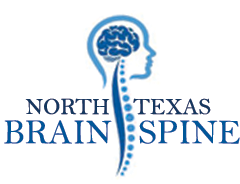Ventriculoperitoneal Shunting with a Programmable Valve is a procedure used to help treat pressure on the brain.

Ventriculoperitoneal Shunting with a Programmable Valve
What is Ventriculoperitoneal Shunting with a Programmable Valve?
Ventriculoperitoneal shunting with a programmable valve treats hydrocephalus by relieving pressure on the brain by draining excess cerebrospinal fluid (CSF). Through the use of a programmable valve, changes can be made after the surgery to ensure the optimal amount of CSF is drained, without the need for multiple surgeries.
Who needs Ventriculoperitoneal Shunting with a Programmable Valve?
CSF is a clear fluid that moves through the brain and spinal cord. It normally serves several functions, including acting as a buffer to help protect the brain from injury and serving to nourish the brain with needed chemicals. Hydrocephalus is a condition in which there is an excess amount of CSF around the brain. Some of the reasons this excess can be caused are if the brain produces too much CSF, if the CSF is not correctly absorbed into the bloodstream, and if the CSF's flow is blocked. An excess can cause problems. The fluid can put pressure on the brain, which can damage brain tissue. Symptoms of hydrocephalus vary depending on the cause, the extent of brain damage, and the age of the patient. There are variations of hydrocephalus, including Normal Pressure Hydrocephalus, in which the buildup of excess CSF occurs slowly over time. Normal Pressure Hydrocephalus occurs most often in older adults, and its symptoms include affected gait, bladder problems, and cognitive problems.
How is it Performed?
In this procedure, a small incision is made in the skull. Two catheters are involved in this procedure. The first, a ventricular catheter, is inserted through the incision and into a ventricle of the brain. This catheter is then attached to the programmable valve. The second catheter is inserted through an incision in the abdomen and routed underneath the skin to the valve. Finally, incisions are closed and bandaged.
The purpose of the valve is that it opens when pressure builds in the brain, allowing excess CSF to drain into the abdomen. The valve is programmable in that its sensitivity is adjustable by the physician through the use of a magnetic device. In this way, doctors can help patients find the optimum opening pressure for the patient's valve without the patient having to undergo multiple surgeries.
After Surgery
The patient can expect at least a 24-hour hospital stay so the doctor can observe to ensure the procedure was successful and without complications. Some possible risks of the procedure include infection, blood loss, and seizures. Rarely, following recovery, some patients may experience postural headaches. These are headaches that occur while in an upright position. Patients who experience these should contact their doctor, as it indicates a need for adjustment.
As with any surgery, ventriculoperitoneal shunting with a programmable valve is a procedure that should be discussed with your doctor. This article is for information purposes only and is not intended to replace the advice of a physician. Please contact your doctor for all questions.




